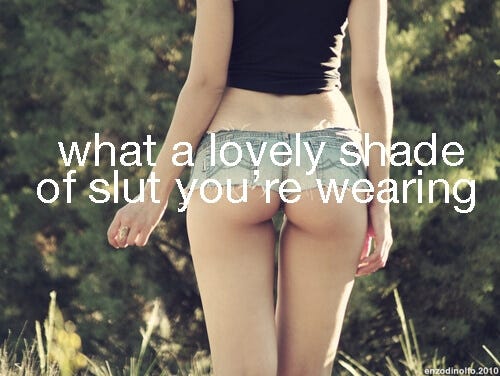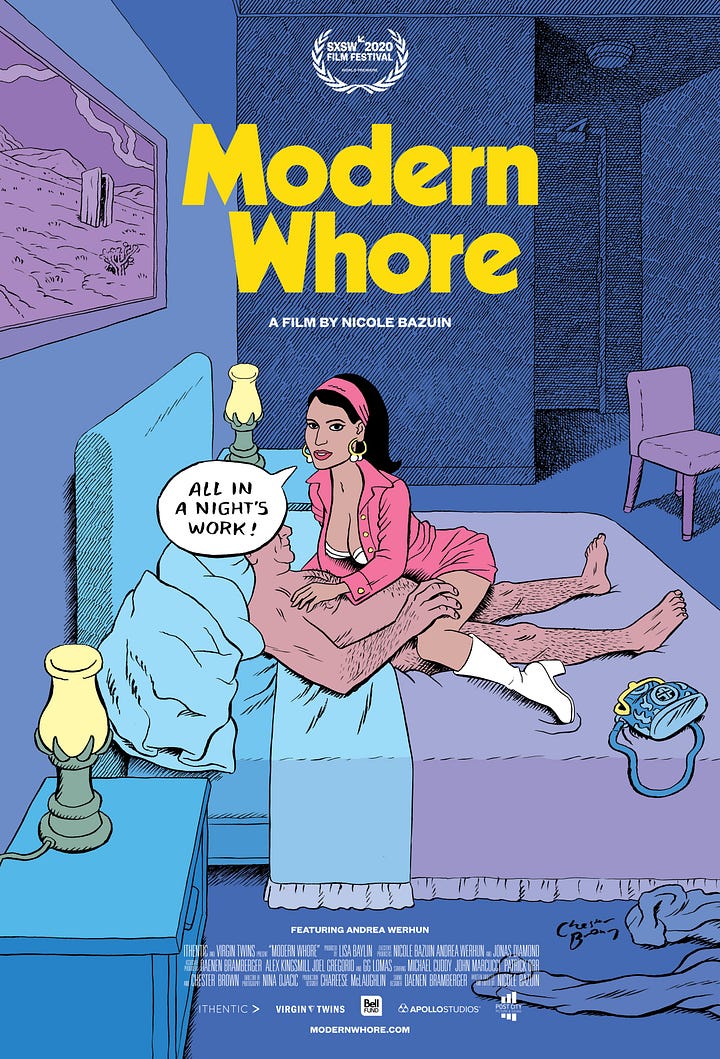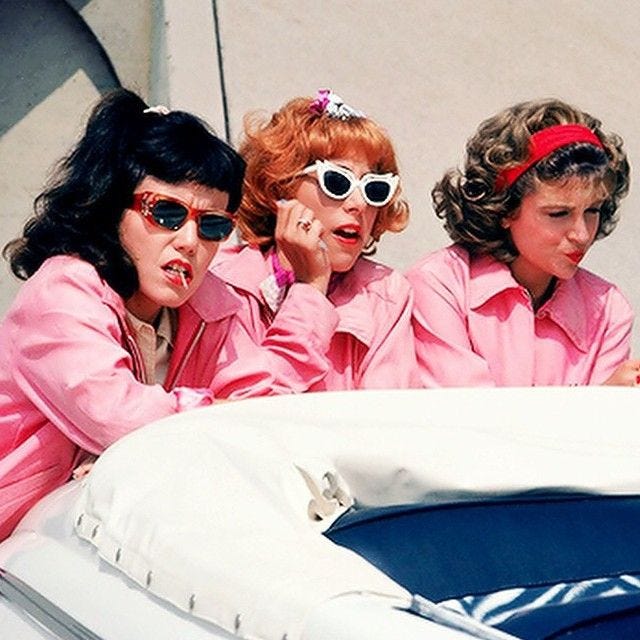As foreshadowed by the Maiden, desires create values. If we desire something, we value those who have that thing, or those who are more skilled at that thing. It creates a hierarchy among people. It creates preferences. And when finally fully developed, it creates a threshold of unacceptability. It creates limits.
The Maiden’s realization of the power of her acceptance creates a realization of her own value. Since she can, through her acceptance (now realized as sexual acceptance) raise the status of others, her rejection can also therefore lower the status of others. There is a temptation to revel in this power, to wield it to aggrandize herself over others, to demonstrate her power. The temptation is then one of Pride: whose status can I raise? Whose can I demolish? Who wants me but cannot have me?
Male children are much more likely than female children to hit, kick, bite, or steal. This is in keeping with the typical conception of aggression of the Warrior. Female aggression can be equally destructive, but rather than physical form, it takes the pathway of reputational destruction (social rejection). Especially in the age of cancel culture and online bullying, we can see this archetypically female form of aggression gaining new power, rather than the physical bullying of male aggression.
This reputational destruction is the Shadow aggressiveness of the feminine archetype of the Goddess of Love. Just as “the Plastics”’ control the reputational status of the New Girl, or the Pink Ladies’ opinion affects the reputation of Sandy (Grease is a phenomenal consideration of the effects of Persona on individual development, as well as the progression from Maiden to Goddess of Love), the Goddess of Love wields the power of her sexuality to raise or lower the status of others under her sway. .
Having learned the power of her sexual acceptance, she now explores that power further. What should she accept? How much? From whom? If she accepts everything, her acceptance means nothing. Thus, setting limits by rejection creates the value of her acceptance, just as the Maiden rejected Gaston but accepted the Beast. But how should she decide what to accept and what to reject?
The Desires she developed as a Maiden now blossom into the Goddess’ Values. She can choose what and whom to accept on the basis of those Values. She rejects behavior that falls outside those values, and rejects people who do not demonstrate those values. Insofar as the Maiden desires protection, the Goddess values strength, competence, and intelligence, honor, status and moral rectitude (in a social species, having a moral code is a sign of fitness, the ability to provide social protections); insofar as the Maiden desires kind treatment, the Goddess values generosity; insofar as the Maiden desires growth, the Goddess values those who are confident and secure enough to allow her space - the space to change, the space to grow.
She also, once she has articulated these Values, begins to hold herself to those same standards. No longer is she the oppressed/protected child, subject to her father’s ethics, but she is now instead an adult agent capable of setting and upholding her own standards.
The power of unrestrained female sexuality is historically considered dangerous to society, and thus the Goddess of Love is given little note in Victorian romances, which skip straight from Maiden to Wife or Mother. But other cultures have more to say. I’ve mentioned Aphrodite, but Kali also embodies the duality of destruction/aggression and fertility/rebirth. Indeed, any fertility Goddess will often have this motif, since her Goddess-nature channels or supersedes the destructiveness of her unrestrained sexuality. Because she is fertile, she must select. She is the agent of Mother Nature, who is selecting the most fit mate, and rejecting the unfit - and determining fitness is a matter of Values.
After the Maiden’s sexual power of acceptance or selection is awakened, she must learn to wield the power her sexuality gives. She must overcome the temptation to revel in that power by using it destructively or manipulatively, and must also overcome the temptation to completely abandon the responsibility that comes with that power and revel merely in unrestrained sexuality.
She must develop Values that guide her in how to wield her new power wisely and well, letting go of the self-doubt caused by the inexperience of the Maiden’s initial transition into having sexual powers.
Visual Schema:
Verbal Schema: As the Goddess of Love develops her Values, she overcomes the Vain Seductress and the Slut inside herself, and through greater Judgment, overcomes the urge for mere Prideful Rejection. Another way of considering this is that the Vain Seductress (cocktease) overuses Pride, and the Slut cannot use it, so it is used against her.
As she develops her ability to be true to herself, integrates her own aggression, as well as her confidence in her right and ability to make good choices, she leaves behind her need to control the reputations of others.
In kink, the dominant may inhabit the teasing role of being sexually irresistible, while the submissive gives up her pride and dignity to demonstrate her desperate sexual need, thus characterizing her sexuality as easy. He might make her do things that are undignified to demonstrate her willingness to sacrifice her Pride. This could be anything from dressing inappropriately to kissing his feet. But such behavior is slutty, and slutty is sexy because of the power of the Goddess of Love archetype.


Slut vs Whore
A quick distinction that we’ll expand fully later on - slut vs whore. The Slut shadow of the Goddess of Love is more specifically about the prideless (often desperate) engagement of her sexuality, rather than the dirtiness/impurity of her sexuality as experienced by the Whore, which is the shadow of the Maiden. We’ll discuss these at length in a few chapters, but just make note of the distinction for now.
Shadows
I will end each section on the Archetypes with this reminder about “The Shadow”, because it is absolutely crucial for understanding the functioning of the archetypes I’m discussing.
On the nature of Shadows.
The author Ursula K. LeGuin, whose writings show a deep understanding about the nature of these archetypes and their functions, has written and commented a great deal on these topics, far more powerfully and thoroughly than I. If I could include the entire text of A Wizard of Earthsea here, I would (and “The Child and the Shadow”, while I’m at it). But, I shall content myself with a few quotes:
“To light a candle is to cast a shadow.”
“Unadmitted to consciousness, the shadow is projected outward, onto others. There’s nothing wrong with me—it’s them. I’m not a monster. Other people are monsters….”
“The great fantasies, myths, and tales are indeed like dreams: they speak from the unconscious to the unconscious, in the language of the unconscious—symbol and archetype. Though they use words, they work the way music does: they short-circuit verbal reasoning, and go straight to the thoughts that lie too deep to utter….”
The Shadow is not a negative thing. The Persona is not a negative thing. They balance each other. No good could be done in the world if we lacked capacity to suppress our instincts for the sake of others. No kindness, no compassion, no promises, no order. All would be a chaos of true individual competition and the species would not last long. But, in creating the Persona, we also create the Shadow. The Shadow contains our lusts, greed, and rage, sadness, fear of death. It is a vital source of creativity, that spurs us to create things that do not yet exist, to imagine a future greater than our present, to enact change, to grow, to reproduce not only our genes but our ideas as well. In order to do anything, to be anything, we must cast a shadow. But we must be aware and cautious of the shadows we cast.
“Your unconscious mind is not a sink of horror and depravity. That's a Victorian notion, and a terrifically destructive one. It crippled most of the best minds of the nineteenth century, and hamstrung psychology all through the first half of the twentieth. Don't be afraid of your unconscious mind! It's not a black pit of nightmares. Nothing of the kind! It is the wellspring of health, imagination, creativity.” --Ursula K. LeGuin
In particular those of us captivated by wanting to be “good” would do well to remember:
[T]he shadow stands on the threshold. We can let it bar the way to the creative depths of the unconscious, or we can let it lead us to them. For the shadow is not simply evil. It is inferior, primitive, awkward, animal like, childlike; powerful, vital, spontaneous. It’s not weak and decent, like the learned young man from the North; it’s dark and hairy and unseemly; but, without it, the person is nothing. What is a body that casts no shadow? Nothing, a formlessness, two-dimensional, a comic-strip character. The person who denies his own profound relationship with evil denies his own reality. He cannot do, or make; he can only undo, unmake. --Ursula K. LeGuin









